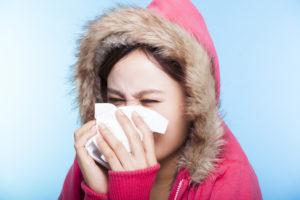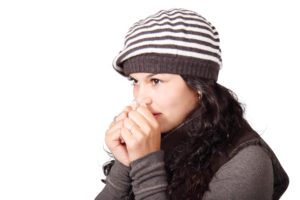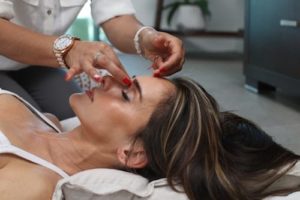Can Fatigue be a Symptom of Allergies?
 In this ever increasing complicated and stressful world that we live in, many individuals find themselves complaining of fatigue. Most people chalk it up to being overworked or to too much stress in their lives, but fatigue can be a symptom of a multitude of illnesses. Amongst these ailments, fatigue is often a symptom of allergies. When an individual suffers from allergies such as hay fever (i.e., allergic rhinitis), asthma, or sinus disease (as a result of allergies), it is not uncommon to feel fatigued. This is often from the body becoming “worn down” from constantly “fighting” the offending allergens. In asthmatics, patients may also complain of fatigue because the shortness of breath that frequently accompanies asthma contributes to their lethargy. In patients with sinus disease, there is often an associated sinus infection (e.g., acute sinusitis, chronic sinusitis) which also may “wear down” the body as most infections typically do, and as a result, fatigue develops in these individuals.
In this ever increasing complicated and stressful world that we live in, many individuals find themselves complaining of fatigue. Most people chalk it up to being overworked or to too much stress in their lives, but fatigue can be a symptom of a multitude of illnesses. Amongst these ailments, fatigue is often a symptom of allergies. When an individual suffers from allergies such as hay fever (i.e., allergic rhinitis), asthma, or sinus disease (as a result of allergies), it is not uncommon to feel fatigued. This is often from the body becoming “worn down” from constantly “fighting” the offending allergens. In asthmatics, patients may also complain of fatigue because the shortness of breath that frequently accompanies asthma contributes to their lethargy. In patients with sinus disease, there is often an associated sinus infection (e.g., acute sinusitis, chronic sinusitis) which also may “wear down” the body as most infections typically do, and as a result, fatigue develops in these individuals.
There are some patients with allergies where the only symptom is fatigue. It is important however for the board certified allergist such as the ones at Black & Kletz Allergy, to recognize that not everyone with fatigue suffers from allergies. In addition, even if someone has allergies, their fatigue may not be the cause or sole cause. There are many other diseases and/or conditions where an individual may complain of fatigue. These conditions should be ruled out rather than just assume that their allergies are the sole cause of their fatigue.
What are some conditions that can cause fatigue other than allergies, asthma, or sinus disease? Below are some of the more common factors and/or disorders that can be associated with fatigue not including the aforementioned allergies, asthma, and sinus disease:
- Anemia
- Chronic obstructive pulmonary disease (COPD) (e.g., chronic bronchitis, emphysema)
- Depression
- Liver disease
- Kidney disease
- Heart disease
- Thyroid disease
- Diabetes
- Autoimmune disorders (e.g., systemic lupus erythematosus, rheumatoid arthritis)
- Fibromyalgia
- Sleep apnea
- Inflammatory bowel disease (e.g., chronic ulcerative colitis, Crohn’s disease)
- Medications (e.g., antihistamines, antidepressants, anti-anxiety medications, blood pressure medications)
- Alcohol or drug use
There are numerous other factors and/or conditions that may play a role in causing fatigue and it is advisable to also be examined by your primary care physician when you are experiencing fatigue.
The diagnosis of allergies begins with a comprehensive history and physical examination. Allergy testing is usually performed by utilizing the skin testing method, however, blood tests can also be done. The treatment of allergies begins with avoidance measures in order to reduce the exposure of an individual with the offending allergen. If avoidance measures are not satisfactory, medications are used in order to alleviate the symptoms. There are a wide variety of medications used to treat allergies and thus the fatigue that may be associated with them. Ironically, many over the counter allergy medications (e.g., antihistamines) can cause fatigue and/or drowsiness. Allergy shots (i.e., allergy injections, allergy immunotherapy, allergy desensitization, allergy hyposensitization) is a very effective treatment modality used for the treatment of allergies and allergic asthma. It is effective in 80 – 85% of the patients that undergo allergy immunotherapy. The usual course of treatment with allergy shots is usually between 3 – 5 years.
The board certified allergy specialists at Black & Kletz Allergy has 3 locations in the Washington, Northern Virginia, and Maryland metropolitan area. We have offices in Washington, DC, McLean, VA (Tysons Corner, VA), and Manassas, VA. All 3 of our office locations have on-site parking. In addition, our Washington, DC and McLean, VA offices are Metro accessible. The McLean office has a complementary shuttle that runs between our office and the Spring Hill metro station on the silver line. The allergists of Black & Kletz Allergy diagnose and treat both pediatric and adult patients. For an appointment, please call our office or alternatively, you can click Request an Appointment and we will reply within 24 hours by the next business day. The allergy doctors at Black & Kletz Allergy have been helping patients with fatigue, hay fever, asthma, sinus disease, hives, eczema, medication allergies, food allergies, insect sting allergies, and immunological disorders for more than a half a century. If you suffer from fatigue and want to decipher if they are being caused by allergies, it is our mission to determine if your fatigue is stemming from allergies. Then it is our goal to improve your quality of life by reducing or preventing your unwanted and aggravating allergy symptoms including fatigue.


 As we approach the Winter in the
As we approach the Winter in the  About 2% of children in the United States are allergic to cow’s milk. The condition usually begins in the first year of life and can affect both breastfed and formula-fed infants. A majority of the children usually “outgrow” the allergy by 5 years of age, however not all children “outgrow” milk allergies.
About 2% of children in the United States are allergic to cow’s milk. The condition usually begins in the first year of life and can affect both breastfed and formula-fed infants. A majority of the children usually “outgrow” the allergy by 5 years of age, however not all children “outgrow” milk allergies.


